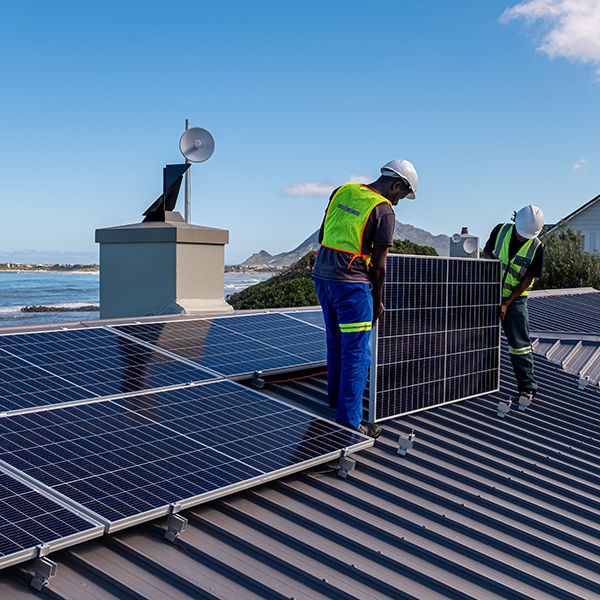In a world increasingly seeking self-sufficiency and resilience, off-grid solar systems offer a powerful pathway to energy independence. Far from being just for remote cabins or tiny homes, off grid solar solutions are gaining traction for those who want to completely disconnect from the utility grid, avoid loadshedding (a significant motivator in places like Lahore, Pakistan), or simply embrace a more sustainable lifestyle.
Going off-grid means generating all your own electricity, storing it, and using it without any connection to the central power lines. It’s a bold step that grants ultimate control over your energy consumption and empowers you to live truly independently.
What is an Off-Grid Solar System and How Does It Work?
Unlike grid-tied (on-grid) systems that feed excess power back to the utility, an off-grid solar system is a self-contained power plant for your home or business. It operates autonomously, relying on key components to generate, store, and deliver electricity:
- Solar Panels (PV Modules): These are the workhorses, capturing sunlight and converting it into Direct Current (DC) electricity through the photovoltaic effect. Monocrystalline and polycrystalline panels are the most common choices, selected based on efficiency needs and available space.
- Charge Controller: This intelligent device regulates the flow of DC electricity from the solar panels to your batteries. Its primary role is to prevent overcharging, which can damage batteries, and to optimize the charging process, ensuring battery longevity. MPPT (Maximum Power Point Tracking) charge controllers are generally preferred for their higher efficiency in maximizing power harvest from panels.
- Battery Bank: This is the heart of an off-grid system, storing the excess DC electricity generated by your panels during sunny periods for use when the sun isn’t shining (at night, on cloudy days, or during extended periods of low sun). Deep-cycle batteries are essential for this purpose, designed for repeated deep discharges without significant damage. Lithium-ion (especially LFP chemistry) batteries are increasingly dominant due to their long lifespan, high efficiency, and minimal maintenance, though lead-acid options are still available.
- Inverter: Your home and most appliances run on Alternating Current (AC) electricity. The inverter’s job is to convert the DC electricity from your battery bank into usable AC electricity. For off-grid systems, a robust “pure sine wave” inverter is crucial to ensure clean, stable power for sensitive electronics. Many off-grid inverters also incorporate a charger, allowing you to use a backup generator to charge your batteries if needed.
- Balance of System (BOS): This includes all the other essential components like wiring, circuit breakers, fuses, disconnect switches, and mounting hardware for your panels. Proper sizing and installation of these components are critical for safety and efficiency.
The Workflow: Sunlight hits solar panels, generating DC electricity. This DC power flows through the charge controller to charge the battery bank. When you need power (day or night), the inverter draws DC electricity from the batteries and converts it to AC, which then powers your home’s electrical loads. If the batteries run low, a backup generator (if integrated) can kick in to recharge them or directly power your home.
Top Benefits of Off-Grid Living with Solar:
- Complete Energy Independence: The most significant advantage. You are fully self-sufficient, free from utility bills, fluctuating electricity prices, and grid outages (a major relief for those experiencing frequent loadshedding in Pakistan).
- Environmental Stewardship: Drastically reduce your carbon footprint. You’re generating 100% clean, renewable energy, contributing directly to combating climate change and improving air quality.
- Ideal for Remote Locations: For properties where connecting to the utility grid is prohibitively expensive or simply impossible, off-grid solar is often the only viable and cost-effective solution.
- Increased Resilience: Your power supply is unaffected by natural disasters, grid failures, or local infrastructure issues. This provides invaluable peace of mind, especially during emergencies.
- Long-Term Cost Savings: While the initial investment can be higher than a grid-tied system (due to the larger battery bank requirement), the elimination of monthly electricity bills and fuel costs (if replacing a generator) leads to substantial savings over the system’s 25-30+ year lifespan.
- Customization and Scalability: Off-grid systems can be tailored precisely to your energy consumption needs and can often be expanded over time by adding more panels or battery capacity as your requirements grow.
Challenges and Considerations:
While alluring, off-grid living with solar comes with its own set of considerations:
- Higher Initial Investment: The cost of a sufficient battery bank is the primary factor driving up the initial expense compared to grid-tied systems.
- Precise Sizing is Crucial: Overestimating your needs leads to unnecessary costs, while underestimating results in power shortages. A detailed energy audit of all appliances and their usage is paramount.
- Energy Management and Discipline: You’ll need to be more conscious of your energy consumption, especially during periods of low sunlight (e.g., prolonged cloudy days or winter months). Running high-draw appliances might require careful planning.
- Weather Dependency: Solar production varies with weather and season. Designing for “days of autonomy” (how many days your batteries can power your home without sun) is vital. A backup generator is often a necessary component for long cloudy spells.
- Maintenance: While solar panels are low maintenance, batteries (especially lead-acid) require regular checks and maintenance. Proper cleaning of panels, monitoring system performance, and periodic professional inspections are essential for longevity.
- Professional Installation: Due to the complexity and safety considerations, professional design and installation are highly recommended for off-grid systems.
Sizing Your Off-Grid System: A Simplified Approach
Designing an off-grid system is a detailed process best handled by professionals, but here’s a simplified overview of the key steps:
- Calculate Your Daily Energy Consumption (Load Assessment): List every electrical appliance you plan to use, its wattage (W), and how many hours per day it will run. Sum these up to get your total daily Watt-hours (Wh) or kilowatt-hours (kWh). Be realistic and consider seasonal variations in usage.
- Example: 10 x 10W LED lights for 8 hours = 800 Wh
- 1 x 150W Refrigerator for 24 hours = 3600 Wh
- Total Daily Consumption = 4400 Wh (4.4 kWh)
- Determine Peak Sun Hours (PSH) for Your Location: This is the average number of hours per day your panels receive optimal sunlight. In Lahore, Pakistan, this might range from 4.5 to 5.5 hours depending on the season and specific location.
- Size Your Solar Panel Array: Account for system losses (typically 15-25% due to wiring, inverter, temperature, etc.).
- Required Panel Output (Wp) = (Total Daily kWh / PSH) / System Efficiency Factor (e.g., 0.75 for 75% efficiency)
- Number of Panels = Required Panel Output / Wattage of a single panel
- Size Your Battery Bank: This is based on your daily consumption and desired “days of autonomy” (how many days you want power without sun). Also, consider the battery’s Depth of Discharge (DoD) – how much of its capacity can be safely used.
- Battery Capacity (Ah) = (Total Daily Ah x Days of Autonomy) / Usable DoD (e.g., 0.8 for Li-ion, 0.5 for Lead-Acid)
- Size Your Inverter: The inverter’s continuous wattage rating must be able to handle the sum of the wattage of all appliances you anticipate running simultaneously (your “peak load”).
The Future is Independent
Living independently with an off-grid solar system is a testament to sustainable living and technological empowerment. While it requires careful planning and a responsible approach to energy management, the rewards of uninterrupted power, freedom from utility bills, and a significantly reduced environmental footprint are increasingly making it an attractive and viable option for a growing number of homes and businesses worldwide, including those in Lahore looking for reliable power solutions in a loadshedding-prone environment.










